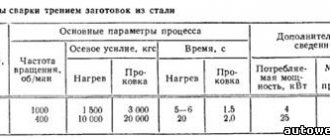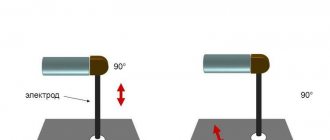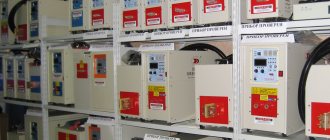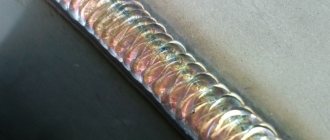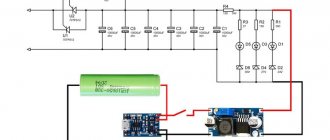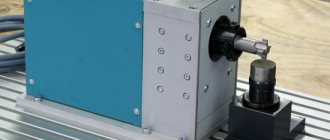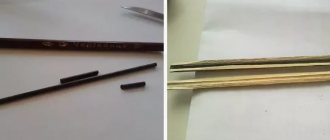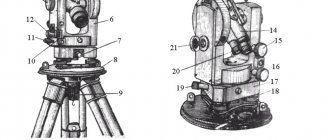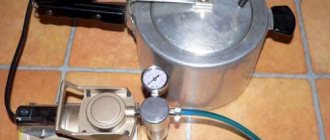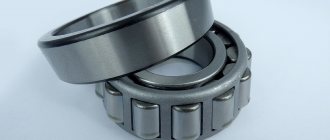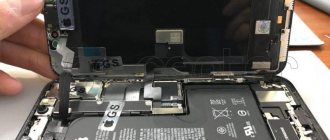Fiber-optic communication lines have a high information signal throughput. Their work largely depends on the quality of the wire connection: the better the hairs are connected, the lower the degree of signal attenuation at the point of contact. Multilayer wire has a complex structure; special equipment is used to weld the joints. It's quite easy to work with.
Splicing fiber optics does not require special skills or training. Just follow the instructions. Before doing this, it will be useful to know some of the nuances of the work. When installing communication lines, a lot of time is spent preparing the cable for the welding process; there is special equipment for this.
Welding fiber optic cable
Optical cable welding is the joining of fibers by high-temperature processing. Optical fiber for transmitting light pulses is made of transparent material: glass, plastic, polymers. Information is transmitted by reflecting a beam of light from the walls of the fibers at high frequency. Therefore, the more accurately the light guide is made and the more transparent the material, the better the signal transmission.
The physical principles of the passage of a beam through a conductor will be discussed in more detail in another material. In this article we will discuss how to connect an optical conductor without losing the passage of a light pulse at the joint. As noted above, the conductor is made of fragile material (thin glass core), so working with an optical cable requires high precision and concentration.
Fig 2. Optical fiber: 1 – in a free buffer, 2 – in a rigid buffer.
Fiber optic cable welding steps
Optical fiber welding is divided into several stages - preparatory, welding itself and the connection isolation stage.
- The preparatory part includes:
- Cutting and cleaning fiber from external insulation;
- Removing conductor modules from internal insulation;
- Removing varnish and grease.
2. Second part:
- preparing optical fiber for connection;
- preparing the welding machine.
3. Third stage:
- Fiber connection;
- Joint insulation.
Cable structure
The essence of welding technology is to connect the ends of an optical fiber and then heat them until they melt and join into a single whole.
For those who have worked with glass, this will seem elementary, but you need to keep in mind that the fiber through which data is transmitted has a diameter of 9 microns (10 times thinner than a human hair) and it is required that the signal attenuation does not exceed hundredths of a decibel.
To understand the essence of the welding process, you need to understand the structure of the optical cable. It is a complex structure, in the center of which there is a glass thread with a diameter of 125 microns. This is just a shell of a 9 micron thread made of ultra-pure glass, which is the information carrier.
The outer glass has a different refractive index than the inner glass. Thanks to this, the light spreads only along the inner thread, reflecting from the walls.
To protect the optical fiber from external influences, it is coated with varnish and placed in module tubes with a hydrophobic gel. In addition to this, the modules are covered with a protective film.
As additional protection from moisture, everything is covered with plastic film. Next comes armor made of Kevlar threads or steel wire, which is covered with a thick layer of polyethylene.
Fiber Splicing Equipment
It becomes clear that without special equipment it will not be easy to make a high-quality connection. The industry produces a ready-made set of tools. Usually this is a plastic or aluminum case that includes everything necessary for the work: a machine for welding an optical cable, a cleaver, a liquid for removing grease from the fiber, a lint-free cloth, a stripper (tweezers) for removing insulation. You can purchase equipment separately at specialized dealerships.
Cleaning the conductor
Before placing the fiber into the splicing machine, the first thing to do is to strip the fiber approximately 40 mm. If you can’t get 40 mm straight away, you can remove the insulation in parts. It is better to carry out stripping with special pliers - a stripper, using holes for the corresponding diameter of the wires. After removing the insulation, the fiberglass is cleaned of grease using a lint-free cloth soaked in industrial alcohol.
Attention! When working, it is necessary to observe safety precautions; if there are broken pieces of fiberglass, they cannot be thrown away, only special disposal.
FOCL welding technology
The length of the optical fiber is measured, it is produced in coils. Multi-kilometer long fiber-optic transmission lines are created by two types of connections:
- detachable,
- one-piece.
Detachable ones require additional costs; connectors and adapters significantly reduce the light transmission of the signal. More often, permanent connections are made by welding fibers with special devices.
Necessary tool
High-quality installation of fiber-optic lines is impossible without two devices:
- cleaver, a device for optical fiber allows you to cut the cleaned cable strictly at a right angle,
- reflectometer or tester, it determines the accuracy of the connection.
Tools are needed to strip the insulating sheath. A standard soldering kit will do the job. There is everything there: wire cutters, pliers, solvent or alcohol, special thick wipes for removing the waterproof layer. The reliability of the connection depends on the quality of surface cleaning.
Fiber optic cable tool
Preparatory work
The process of preparing the cable before refilling takes a lot of time. First, the optics are examined. Water destroys the light-conducting layer. If the end of the wire is wet, cut off at least a meter from it with a wire cutter. To remove the sheath, the cable is stripped down to a hydrophobic gel. Cutting with a stripper knife does not take much time: after a circular cut at a distance of at least 3 cm from the end, it is enough to pull the cable together. The waterproof layer is removed with a solvent and lint-free wipes. It is necessary to remove the insulation completely, this affects the quality of the chip.
Optical fiber cleaver
A very important tool is the cleaver. The working part of the device is a diamond disk that cuts the fiber at an angle of 90°. The prepared fiber is placed in the cleaver in such a way that there is approximately 16 mm from the edge of the insulation to the cut level. Control using a special measuring scale on the body. The wire is then secured with a clamp. The operation itself is performed by simply pressing a button. The same operation must be done with other conductors.
Attention! Before the chipping operation, you need to put on a thermal insulating tube KDZS for subsequent fixation and insulation of the conductor joint.
Production of welding works
For this, a special welding machine is used. The procedure for performing the fiber connection operation is approximately the same for all types of machines:
- After switching on, the clamp cover opens, the prepared 16 mm conductor is laid along the installed limiters, with a gap of 1-1.5 mm. to the junction. This operation requires visual control;
- Close the lid and press the start button. The connection process occurs automatically with the process displayed on the monitor screen.
- At the end of the connection, signal losses at the junction are automatically determined; a decrease in the level by 0.022 dc (Decibel) is considered a good result.
Then the KDZS protective tube is placed over the joint. To heat the heat-shrinkable tube, the welding device has a special compartment - a heat stove, where the “raw” insulation is placed. After warming up (about 40 seconds), the device gives a ready signal - you can take out the finished cable sheet. The process of joining fiberglass is clearly shown in the video.
Cleaver and reflectometer
A cleaver is a high-precision mechanical device that provides a perpendicular cut of an optical fiber. The quality of the weld depends on the quality of the chip.
If the cleavage is bad, smart welding machines simply do not weld the optical fibers. Among cleavers, Japanese ones are also the best.
Some experts attach such great importance to it that, if there is a shortage of funds, they prefer to purchase a high-quality Japanese cleaver, and in addition to it they buy a relatively cheap Chinese welding machine.
Immediately after chopping the optical fiber, it is necessary to insert it into the welding machine and begin welding; there should be no intermediate actions, otherwise this will lead to contamination and poor welding quality.
The third device that you can’t do without is a reflectometer; it measures the quality of the line; its readings determine whether the fiber-optic splicing needs to be reworked or not.
A combination of precision welding equipment combined with operator experience will produce a reliable connection with optimal signal transmission characteristics.
Greenlee 915FS-KIT1 is a kit of equipment for complete installation of optical cables.
The splicing machine included in the Greenlee 915FS-KIT1 kit is equipped with a system for aligning fibers along an active V groove. Provides high quality connections with minimal losses at the connection point. Adaptation to FTTx and PON and the ability to install Splice-On connectors. The welding machine is recommended for installation of fiber-optic lines throughout the city, networks of industrial enterprises, operators and Internet providers.
Figure 3. Greenlee 915FS-KIT1 Fiber Splicing Kit
Features and benefits of Greenlee 915FS-KIT1
- 3 years warranty;
- optical alignment along the active V-groove;
- low losses at the welded joint: 0.02dB;
- automatic and manual arc calibration;
- possibility of installing Splice-On connectors SC, LC, FC, ST;
- protection against water and dust: IP52.
You can see how the device works by watching the video below.
Welders
For welding optical fibers in Russia, devices most often used are from Japanese companies Fujikura, Sumitomo and Chinese Jilong. Japanese manufacturers initially showed themselves excellently in this area, their machines are the best, but the Chinese are stepping on their heels and producing decent welding machines at low prices.
To obtain high-quality welding of an optical fiber, you need a welding machine capable of aligning the fibers not only along the cladding, but also along the core.
They have several servomotors that can move the fiber in all planes. This allows you to achieve the greatest accuracy in connecting fiber optics. Most of the products from the above-mentioned companies can produce high-quality alignment.
Where the requirements are not as stringent as on trunk communication lines, welding machines with sheath adjustment can be used. The optical fiber in these devices is fed through V-shaped grooves.
If there is an eccentricity of the central core or a scratch on the groove, the welding quality will be lower, and accordingly the attenuation will be greater. Japanese devices are universal and work with almost all types of fiber.
Optical cable connection without welding
Expensive optical cable welding operations are included in the cost estimate for large-scale types of major or current repairs. But if you have to repair networks after one-time damage or moving equipment. One of the alternative methods to a welded connection is an adhesive connection through connecting connectors.
The current opinion that gluing is of inferior quality is not correct, because and in both cases, the criterion is the quality of all stages of work performed. The main disadvantage of gluing is the significant increase in time required to complete the work. because the glue must dry well before use.
The process of preliminary fiber preparation is the same as for welding: cleaning the fiberglass and degreasing.
Preparing the glue and connector
Before gluing the cable into the connector, it is a good idea to check your eye sharpness and the quality of the fiber. To do this, you can first try to insert the end of the fiber into the capillary hole of the connector (there have been cases where it was not possible to insert it into the capillary due to a defect in the fiber). It is necessary to push the fiber into the hole with little force so as not to break off. When using a Russian-made cable, it is better to first check the capillary opening with a calibrated wire - 125 microns. If the verification procedure was successful, then prepare the glue.
The adhesive can be one-component or two-component based on epoxy resins.
Fiber Optic Adhesive Requirements
- Durable;
- Moisture resistant;
- Do not shrink;
- Be flexible enough;
- Sets slowly under normal conditions and quickly under special conditions when heated.
A two-component epoxy with components for dilution 1:1 is best suited for these purposes.
Figure 4. Pressing glue into the connector hole.
Fiber optic cable splicing
Having completed the previous steps: the connector has been checked, the fiber has been cleaned, you can proceed directly to gluing. When preparing a two-component glue solution, you can pre-mix the composition and use a special two-gram syringe to push it into the connector hole until a drop appears on the opposite side, carefully coat the end of the fiber and carefully insert it into the connector hole, pressing it all the way into the buffer cut off from the insulation.
You can also take one component, without mixing, push it into the syringe through the hole in the connector, and coat a piece of fiber with the other components. This method is better suited if several similar operations are carried out over a long period of time.
After the glue has hardened, it is necessary to carry out the procedure of chipping the exiting end from the connector and polishing it. After which the gluing procedure will be completed.
Figure 5. threading the end of the fiberglass into the hole.
| Attention Bearing Buyers Dear customers, send your questions and requests for the purchase of bearings and components by email or call now: Delivery of bearings throughout the Russian Federation and abroad. Bearing catalog on the website |
Attention Bearing Buyers
Dear customers, send your questions and requests for the purchase of bearings and components by mail or call now: tel: +7 (495) 646 00 12 [email protected] Delivery of bearings in the Russian Federation and abroad. Bearing catalog on the website
themechanic.ru

